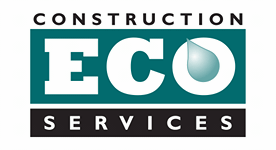5 Ways Permeable Pavers Can Save You Money
Permeable paving systems are considered to be a critical component of Low Impact Development due to the systems ability to reduce stormwater infrastructure, minimize environmental impact and increase pollutant removal. In addition to these benefits, they can also provide significant cost savings. Here are 5 ways permeable pavers/pavement can save you money through integrated design.
1. Potential to decrease overall detention requirements
Both the City of Houston and Harris County currently provide incentives that have potential to decrease overall detention requirements when utilizing Low Impact Development . When you think about detention volume in a dollar amount, it can range from $4-$9 CF installed, depending on the type of facility used. If a site requires 20,000 CF based on the increase in imperviousness, you are looking at a $80,000-$180,000 price tag. You either end up with a pond that will never provide value to your development in terms of an ROI or you can invest in an underground system to save valuable real estate. The use of permeable pavers/pavement in the City of Houston (in approved areas) will not be counted towards the increase in imperviousness and could potentially decrease your overall detention requirements.
2. Get all (or most) of your storage volume below the pavers
Depending on the system utilized, the subgrade below consists of various layers that contribute to not only the functionality of the system, but also provide storage volume. This means that the value in using permeable pavement/pavers doesn’t just end when you change standard pavement for a permeable surface. The subgrade below is now acting as a standard detention pond or underground system would. This largely depends on specific design requirements, but more often than not, we are able to reduce the required detention enough to store all of the volume below the pavers.
3. Pavers/Pavement becomes inlets and conveyance
In a traditional design, stormwater is directed to inlets in center drive isles and the curbs are the high points. When using pavers in areas such as parking stalls, the design is reversed. The parking stalls become the low points and the parking areas becomes the inlet, which eliminates the need for inlet structures. Stormwater flows through the pavers into the subgrade where it is stored and leaves the system though an underdrain which would ordinarily be large storm pipe.
4. Pavers take the place of standard concrete
The most common response I hear when bringing up the use of pavers is that they are more expensive. It’s important to consider the product that was going to be used in place of the pavers.
5. Gain usable real estate that would otherwise be used for a detention pond
When weighing out various options for detention, think of it in terms of a ROI. A detention pond is going to be cheaper upfront, but what are the missed opportunities? Additional buildings? Parking? A detention pond, while a necessary requirement, will never provide an opportunity to generate revenue. In fact, more often than not, they cost more long term when considering maintenance requirements. A regular maintenance routine of mowing, trash and sediment removal, and slope stabilization are all required to keep a pond in compliance.
Permeable pavers often get a bad wrap of being “too expensive”; but the truth is they could potentially save you money. Our Stormwater Systems group Value Engineers every project to provide you with the most cost effective solution. If you are interested in learning more about permeable pavers and what they can do for your project, contact our Stormwater Systems group today.










